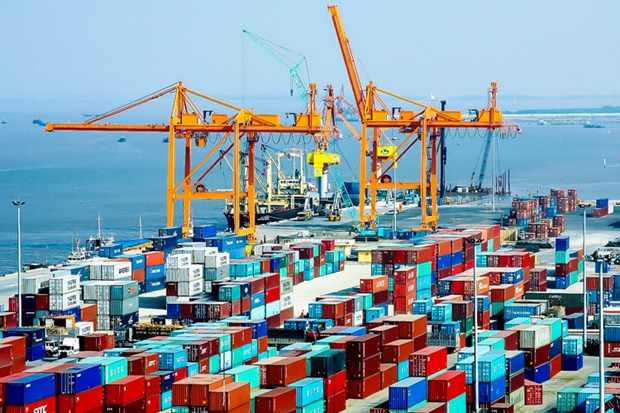Cen Land transforms into real estate developer with bold goals
Cen Land is shifting from brokerage to development, targeting a 170% revenue increase and 424% profit growth in 2025.




The General Department of Statistics figures show that small and medium enterprises currently account for more than 97% of total operating enterprises, contributing about 40% of GDP, 31% of exports, 29% of state budget and create jobs for more than 5 million labours. However, the reality that small and medium enterprises "died prematurely", has revealed many limitations in management capacity, lack of capital, small and insufficient competition ... in the process of integration.

Many things missing
Many economists judged that small and medium enterprises are motivations of economic growth but in the reality, this region still remains many difficulties and challenges in competition and integration.
For example, there are four common difficulties for small and medium enterprises they are limited capital and limited capital access when they want to invest in technology innovation, business development and expansion of production; difficulty to access advanced technologies, especially technologies that require large capital, high quality human resources; The small businesses scale that makes it difficult to organize specialized divisions and departments, and although there are many small and medium business associations, they face difficulties, especially in terms of capacity and operating budget.
According to Mr. Dau Anh Tuan, Head of Legal Department of Vietnam Chamber of Commerce and Industry (VCCI), the survey result of more than 8,000 private enterprises operating in Vietnam in the past year shows that these enterprises are suffering from many limitations to access to resources, for example, it is to access to information, about 75% of small and medium enterprises rely on relationships to access to information, even for large scale businesses, The rate is up to 79%.
These enterprises also find it difficult to access to loans from credit organization or state preferential support funds. The Provincial Competitiveness Index (PCI) survey 2015 shows that only about 40% of microenterprises have access to bank capital, while in small, medium and large enterprises is 62 %, 74% and 81%.
In particular, small-scale private enterprises are borrowing at a more expensive cost, even with high interest rate, although bank’s interest rates tend to fall. Mr. D., the owner of a small-scale food production establishment in Binh Duong, said that if making a comparison, the loan interest rate of his establishment is equivalent to large enterprises if they had secured assets, loans is in short-term, his company meets difficulty in handling long-term business plans, forced to take short-term to raise long-term.
Meanwhile, the economic report quarter I/2017 released by the General Statistics Office showed that in the first three months of the year there were 26,478 new registered enterprises, up 11.4% in number of enterprises and up 45.8% in registered capital compared with the same period. However, also during this period, there were 23,904 enterprises dissolved, stopped operating, equivalent to 9/10 newly established enterprises; on average, there are 265 enterprises leaving the market every day and 294 new enterprises enter the market.
On the other hand, GDP growth in the first quarter reached 5.1%, lower than the same period last two years and far below the target set for this year.
This economic picture shows that the Prime Minister's policy of "Tectonic Government" aims at improving the investment and business environment, building the administrative machine for enterprises which have not yet been absorbed to all levels, have not become a guideline of action, and have not strongly activated the development of private economy.
There is no choice but connection
At the institutional level, Mr. Nguyen Dinh Cung, director of the Central Institute for Economic Management (CIEM), remarked that when the barriers to business are too big, the private sector is unlikely to converge to become a strong force. At the same time, if there is no equitization of SOEs (State-Owned Enterprises) in essence, there is no opportunity for private enterprises, including large private enterprises, to show their strength.
Compared with other countries, discussed in a seminar, Mr. Le Anh Van, director of the Legal Aid and Human Resource Development Center, estimated that only 21% of Vietnam's small and medium enterprises which can connect with the global supply chain while in Thailand and Malaysia it is 30% and 46%, respectively.
Mr. P.M, general director of a medium-sized company in Ho Chi Minh City, said that the private sector has contributed significantly to the country's construction in the past time but awareness of the role of the economic sector is not consistent, not an important economic component that the "favor" seems to only for the state-owned sector and foreign-invested enterprises.
Others, according to Mr. P.M, enterprises have little opportunities to access to market information and government incentives, they have to "swim" themselves, do business according to experiments and sometimes also suffered unfair competition.
Also according to M., small and medium enterprises themselves have to improve their competitiveness. Similar to his business, while competitors compete on price, his sales and marketing departments find the needs of each small clients and then provide the products suitable to the target group.
Another solution by Vo Tri Thanh to improve competitiveness is to link according to the product value chain as it is a quick and effective solution for small and medium enterprises to build their brand. At the same time, there should be more open policies and solutions; large enterprises have had their own brand names already, especially FDI enterprises, which need to be encouraged, led and spread to enterprises in this sector.
Mr. Le Hoang Vu, Director of Nhadat.net Co., ltd, said that if small and medium enterprises do not strive to expand but still keep small scale, they cannot compete and position in the market.
According to Mr. Vu, it is necessary to determine that which competitors are competing with the enterprise, what competition for, how different, how to connect with other enterprises in the same industry ... "The connection is to develop together, paying attention to human resources and technology to cut down on reasonable expenses, managing enterprise in a modern model, which can increase labor productivity. It is also a solution", Mr. Vu noted.
On June 3, 2017, on behalf of the 12th Central Committee of the Communist Party of Vietnam, General Secretary Nguyen Phu Trong signed Resolution No. 10-NQ/TW on development of private economy becoming an important motivation of the socialist-oriented market economy.
The resolution defines to develop a healthy, efficient and sustainable private sector, to become an important motivation of the socialist-oriented market economy. To pay attention to raise the quality and efficiency of business in the private sector. The growth rate of the private sector is higher than that of the economy. To strive to increase the share of the private sector in GDP to about 50% in 2020, 55% in 2025, 60 - 65% in 2030.
The Resolution sets out the tasks and solutions to be implemented, including: the unification of awareness, thoughts and actions in the implementation of policies on the development of the private sector; Create a favorable investment and business environment; To support the private sector in innovation, creation, technological modernization and human resources development, to raise labor productivity; Improving the validity, efficiency of state management; To renew the contents, methods and enhance the leadership of the Party, to enhance the role of the Vietnam Fatherland Front, socio-political and socio-professional organizations in the private sector.
Cen Land is shifting from brokerage to development, targeting a 170% revenue increase and 424% profit growth in 2025.
Menas Group has entered a strategic partnership with Keppel to co-develop an integrated ecosystem of lifestyle services across Keppel’s real estate projects in Vietnam, beginning with the landmark Celesta City development in Saigon South.
Phuc Sinh’s expansion underscores Vietnam’s growing role in sustainable agriculture and its increasing appeal to global investors
PVI Asset Management (PVI AM) and SonKim Capital (SK Capital), a business unit of SonKim Group has announced a strategic collaboration to develop innovative real estate investment products tailored for institutional investors and high-net-worth individuals.
Filum AI has successfully raised $1 million in funding despite a challenging venture capital market, underscoring the potential of AI and shifting investment strategies.
Enterprises are advised to promptly assess and evaluate the impact of the changes in the newly-issued to ensure timely compliance in the upcoming tax finalization period.